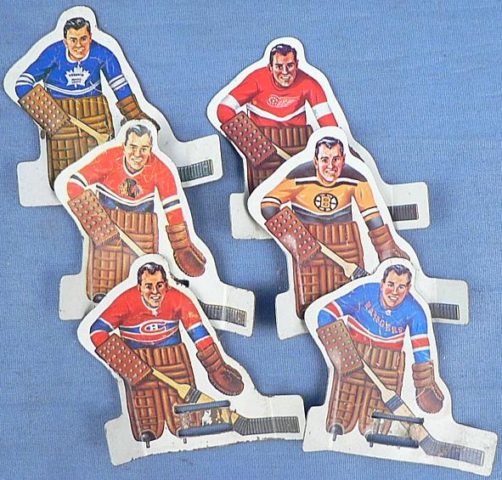A guest post by Alex Summers
The Original Six refers to the six founding teams of the modern NHL prior to the 1967 expansion. They were the Chicago Black Hawks, Boston Bruins, Montreal Canadiens, Toronto Maple Leafs, New York Rangers, and Detroit Red Wings, all of which are active NHL teams to this day. But while they are referred to as the “Original Six,” it’s incorrect to think they were the founding members of professional North American hockey. Undoubtedly the oldest teams in the current league, they were neither the oldest professional teams back then nor were they all in existence at the start of the very first NHL season back in 1917. How these teams came to be known as the Original Six is a story every hockey fan ought to know.
The First Decade
Back before the knee brace was a common piece of equipment let alone helmets, the NHL operated with ten city teams playing each other throughout the season. By the late 1920s the Original Six had entered the league, which also included the New York Americans, Montreal Maroons, Pittsburgh Pirates, and Ottawa Senators (It’s worth noting that the Americans and the Maroons were part of an initial expansion that also included the Bruins.) But as the Great Depression went under way, the Maroons, Pirates, and Senators franchises were eliminated due to financial constraints. As the U.S. and Canada chugged through the economically stagnant 1930s, the NHL operated with seven teams.
The NHL During World War II
When the Second World War broke out in late 1939, two side effects would greatly influence the formation of the Original Six as we know them today. One was that since Canada joined the war effort almost immediately, most of the NHL’s Canadian players were absent from the game for the next five years. This removal of more than half of professional hockey talent caused revenues to plummet even further and any plans for expansion were put on hold. The other was that upon the United States entering the war in late 1941, the New York Americans collectively chose to disband soon afterward. The result was that the NHL was reduced to only six teams.
Post-War Hockey Expansion Efforts
The problems that arise from only having six teams in a league were apparent. Playoffs were practically meaningless and championships were dominated by recurring franchises, while shady management practices inherent with such a centralized close-knit group of teams were rampant. In perhaps the most shocking example of pre-expansion NHL operations conduct, Red Wings owner James E. Norris was able to essentially control three other teams in the league, an unprecedented amount of influence possessed by one man. It was clear that the league needed to be expanded and the corruption put to an end. But from the end of the war to the 1960s, the North American economy was unable to support such a move, and the Original Six played on.

Expansion and Legacy
It is perhaps this period of relative turmoil between the end of the war and NHL expansion of 1967 that granted the Original Six the legacy they carry to this day. Prior to the expansion it was not easy being a professional hockey player off the ice as well as on. An argument with a manager could have resulted in exile to a minor league team. The pay was lousy. Unless you were on one of the teams that could afford a powerful bench, you had practically no chance of every making it past the playoffs.
The players that were on the ice during the age of the Original Six have long since retired and faded into the stats. But the rugged disposition these players must have had in order to handle the way in which the league operated during those few decades after the war enshrined them as the founding fathers of the modern NHL. While other teams existed before them, none were able to survive. While other teams have come into existence, none can look back and appreciate their history and integrity quite like the Original Six.

